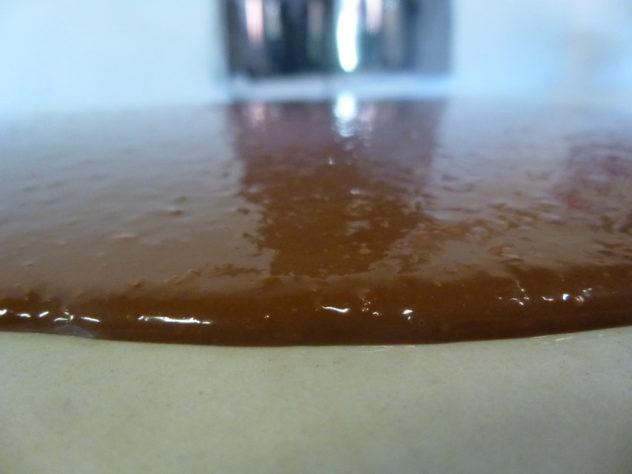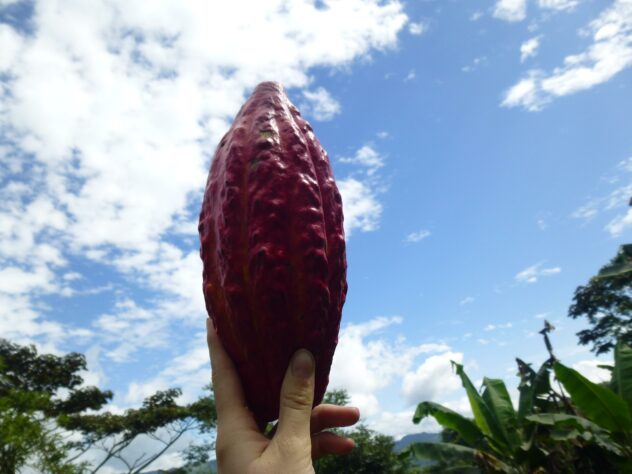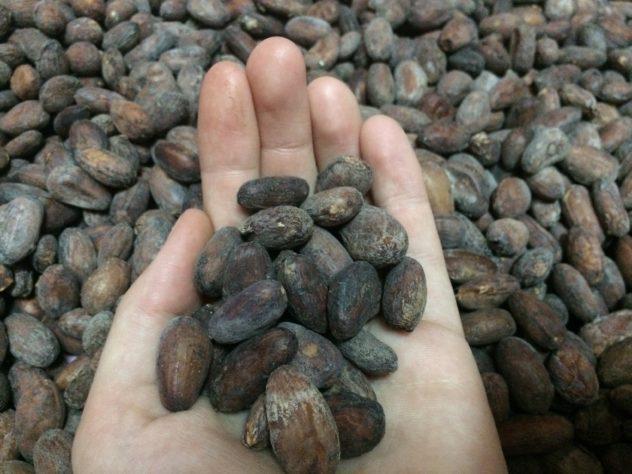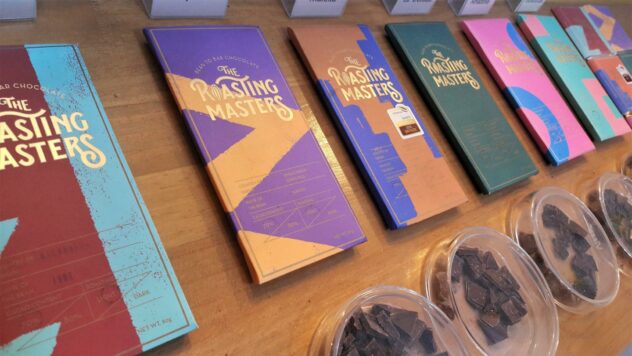Do you know the lifespan of your taste buds? They're the little bumpy bits protruding from the surface of your tongue. You use them every day; it might seem like they grow with you. But they actually only stick around for about 10-14 days before they slough off to forge a new life down the drain. So how are you making their meager lifespan worth it?
Personally, I eat chocolate, every day. Rich, ethical chocolate.

Eating Better Chocolate Changes Lives
Most everyone eats chocolate, like most everyone sleeps at night. But doesn't the quality of that sleep affect your life? The mere act of sleeping is only the first step. Making sure you get the best sleep possible is what determines the quality of your life, and the lives of those around you. If everyone slept well every night, the world would be a better place. Chocolate requires the same considerations.
If everyone ate better chocolate, the world would be a better place. We would have a more bio-diverse and cooler planet, with more equal & educated citizens, not to mention tastier treats. It's as simple as choosing better brands to support at the grocery store. Such better brands pay more for high quality cacao (the raw material of chocolate), and always strive to protect the environment through their purchases. For some makers this means only buying fair trade or organically-sourced cacao, while others take it a step further.
The chocolate people— makers, educators, and flavor creators— behind these brands are changing the way we approach commodities, food, and culture. Just as mattress makers revolutionized sleeping for those who had dozed on the floor, a new generation of chocolate makers are slowly altering the chocolate industry. We answer questions like "what does cacao look like?" Or "who exactly grows it & where?" How much money do they make in a day? And how do their lives affect yours? How can your choices affect theirs? Now is the time to figure out.

A Rising Tide Floats All Boats
To form a clearer picture of better chocolate, the millions of farmers who harvest cacao need you to understand their plight. Most of them feed their families on less than $2 a day per capita, and many are resorting to chemicals & clearing forest in an effort to up production. They, like you, want better chocolate. So to make it easier for us to find it, craft chocolate makers practice utter transparency. Modern makers publicize the fact that they use cacao bought for an equitable price and cared for in an environmentally-sound way. And consumers understand.
Let's look at directly traded cacao, as an example. In 2012, a maker by the name of Alex Whitmore helped to found an organization called Direct Cacao, which connects chocolate makers directly with cacao farmers. These makers work with farmers who are focusing on cultivating quality cacao, and buy that cacao from them at stable higher prices. In turn the quality is passed on to you without a price increase, and the extra income goes into the local community. Direct trade injects more money into the farmers' local economy, and gives them access to a new market. Nowadays some intrepid farmers are even continuing the evolution by questioning any version of the traditional system.
These farmers are now forming brands, just as chocolate makers do. Still others have formed cooperatives, and expanded their cacao processing beyond chocolate. For example, some sell cacao's prized fat (cocoa butter) and solids (cocoa powder). Typical chocolate has more inventive uses, as well. Now it's also being consumed in spa treatments, adding depth to savory foods, and enticing tourists into cafes. Making these products at the origin, almost exclusively in developing countries, provides growth opportunities where it's otherwise not so common. The movement towards craft chocolate is changing communities both geographically and intellectually.

Making Use of The Window of Opportunity
The key to continuing to grow these communities through cacao is this connection. If a window of market opportunity is opened and stays open, then farmers have the ability to grow more than just crops. Many of the economically poorest regions of the world are among the richest in natural resources. They have the materials, but they just don't know what to make with them, or where to sell them. It's this cycle of poverty and lack of education which keeps intelligent and motivated individuals down. The loss of an education for anyone is a waste of potential for everyone. Someone smarter than I am has asked what if the cure to cancer were locked in the head of a child without access to an education? Just think:
The opportunity cost of cheap cacao could be the cure to cancer.
Providing tools & training is one very important action, and opening the gate to access the market is the other. Higher prices for cacao is the first stage, and building businesses is the next. The thousands of people working behind the scenes over the last couple of decades have been priming consumers to be a willing market. We have been educating consumers like yourself how to take action towards better chocolate. To get to the next stage of equality, we now need to teach consumers that craft chocolate can embody these ideals no matter where it's made. The bright future of craft chocolate is finally coming to light.

How Creatives Change the Chocolate Industry
Every chocolate maker I know has gotten into this business because they saw something that needed changing, and then took it upon themselves to change it. They care, about the environment, their community, quality ingredients, great flavors. Everything they do has a grander purpose behind it; their careers are no longer a choice, but a calling. With few exceptions, a so-called chocolate person is a walking stereotype. Even if they have a day job, chocolate is their driving force. And they want to share it with everyone.
Look, don't get me wrong. I realize that not all chocolate makers could name even one farmer they work with. But craft chocolate is the first footfall on the long journey towards overhauling a system which has been centuries in the making. And shortening the trek that chocolate takes to reach the market is vital. Cutting out cacao middlemen, stabilizing cacao prices, and lowering shipping costs by selling finished chocolate are just a few ways that better chocolate can still be affordable.
But while I could wax poetic about agriculture & sustainability to you all day, it still wouldn't make you understand it any better. It's not my story to tell. I've only worked on a cacao farm for a few months, but much of the world is born into, lives on, and dies for farms scattered all over the world. You can visit many of these, or support them by buying their products and continuing this positive cycle. At home in the supermarket or abroad in the airport, choose to bite into better chocolate. You— and your taste buds— will be glad you did.

















Terri Glover
Hi there. This is Terri Glover (friend of your Mom’s from Bossier City). My nephew, Payne, is in Osaka, Japan teaching English right now. He took a sabbatical from his doctorate program at the University of Colorado. If you get to visit Ōsaka, I’m sure Payne would love to show you around.
Oh, and I love chocolate so I plan to follow your FB page. Keep posting.
Thanks and safe travels.
Max
Terri, I'm glad you plan to follow along! When mom & I visit Osaka in mid-February we would love to meet up with Payne. It will be my first time in Osaka, and Mom's first time there since the 80's. One of my friends here in Korea was in the same boat with takiing a break from his doctoral program, so it seems to be a not-uncommon option!
I look forward to hearing more from you, soon.
Take care.